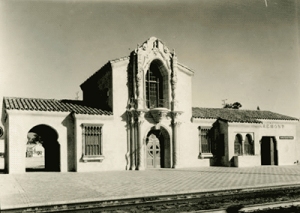The early stages of Claremont, CA are the direct result of the inherent traditional values of the community. The preservation of the city, lead by community collaboration, has allowed for the celebration of historical architecture and natural and cultural resources. Much of what are considered iconic buildings in Claremont have been through the help of Claremont Heritage, a non-profit organization that helped preserve one of the most historic buildings for the city, such as, Santa Fe Train Depot, the oldest house in Claremont called the Summer House (1887), and the Garner house.
Claremont was founded in 1887 in part by the Santa Fe Railroad and the Claremont Colleges. It’s village district is today one of the only historic downtowns in the region by maintaining its “town meeting” form.
The creation of the Santa Fe Railroad catalyzed the creation of the community, but after a short success, the town nearly became a “ghost town”. In addition, the creation of Pomona College, in due part with the proponent values of the founders, wanted to create a “New England Style” college that reflected their hometown spirit. The college’s success became the hallmark establishment and allowed for the city’s culture, community, and future development endeavors to flourish.
Claremont’s rich history going back to Native American settlements, Mexican and Anglo-European influences, and the first filed claim of the territory by Jedediah Smith all established a sense of pride and knowledge of the city’s very own history and is a true contribution to the everyday decisions for the continuation of development in the city.


